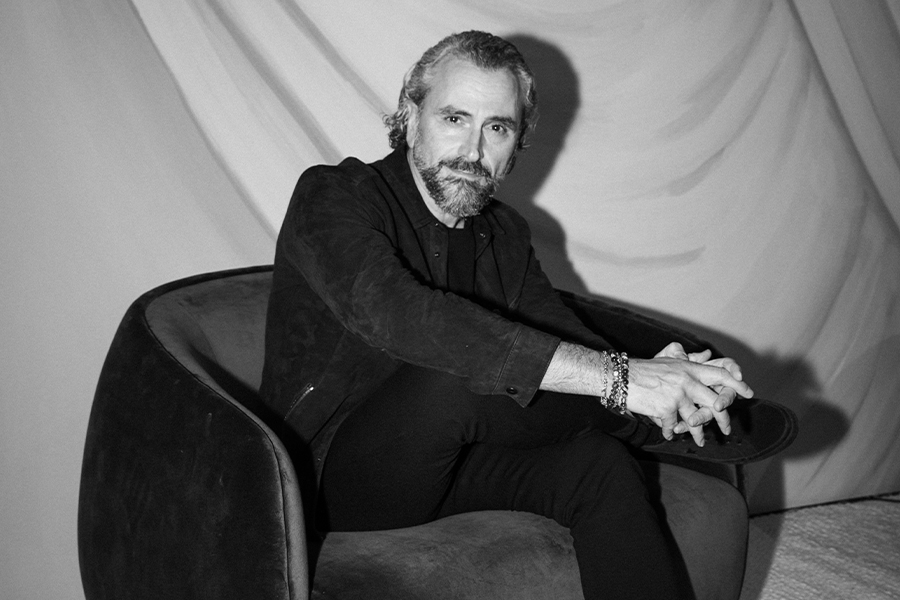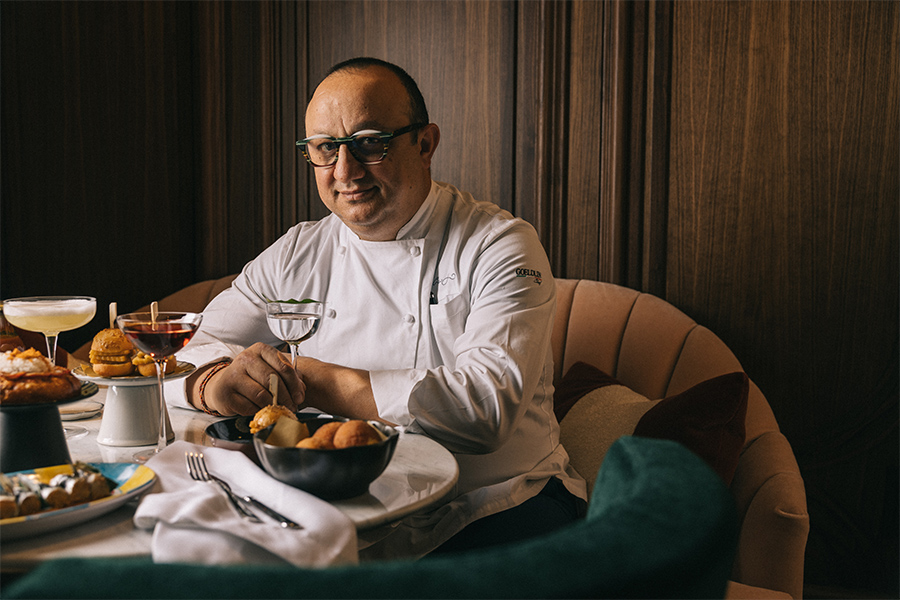Although Jo Littlefair launched London- and Portugal-based interior design studio Goddard Littlefair with fellow cofounder Martin Goddard 10 years ago, she was drawn to design and its many facets long before that. Nature, travel, and a rural upbringing have all played integral roles in developing a worldly point of view.
Where did you grow up? Did it influence your career path?
My parents were third-generation dairy farmers from County Durham [in North East England]. There is a part of me that still feels rooted to that place. While I eventually rebelled against what I saw as a conservative upbringing, I now respect that my drive and determination come from seeing the work ethic of my parents. I credit my mother and grandmother for gifting me with ways to explore creating in three dimensions, teaching me to knit, crochet, and make my own clothes, leading to a pursuit of textile design.
What is your first design memory?
When a new textiles teacher joined my secondary school, we went from creating a piece of clothing per term to designing experimental textile art. From that moment on, I was hooked on the combination of using textiles to create art pieces, and it has never stopped.
After university, I wasn’t ready for the fashion world. I had wanderlust. For seven months, I ended up as a crew member on maxi-sailing yachts that took tourists around Australia’s Whitsunday Islands. Then, I came back to Europe and worked on a superyacht with interiors by Donald Starkey. I didn’t realize you could design something on such an intricate level—I was mesmerized. It hadn’t occurred to me that there was an industry doing such things. I had to work my way around the world, and it made me a different person. [I had the chance to] experience places and learn about people and cultures. My first design job was sourcing antiques and buying chandeliers on the island of Murano for Saudi Arabian palaces and hotels.
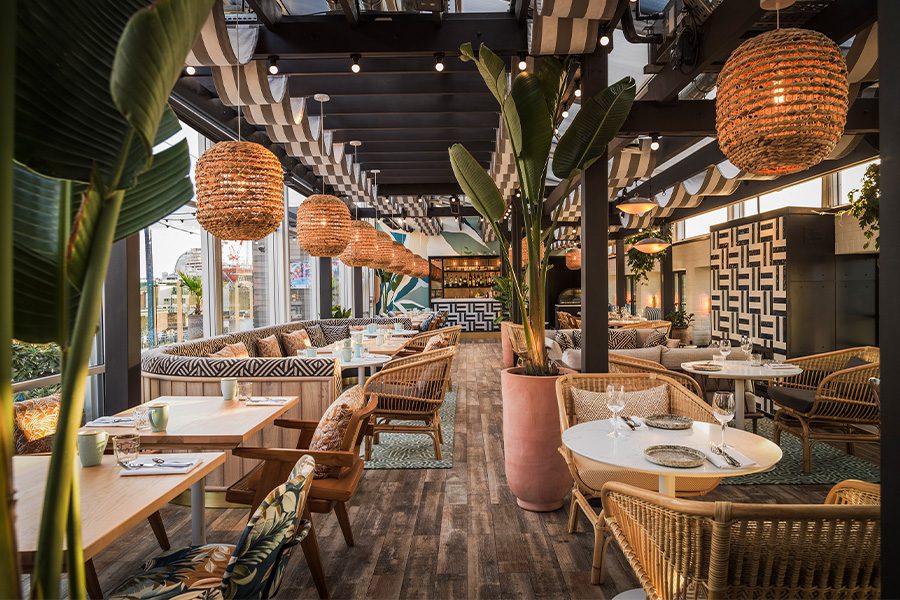
Laurel’s on the Roof at the Mondrian London Shoreditch
When and why did you decide to open Goddard Littlefair?
We launched Goddard Littlefair in 2012. Martin and I met while working at another studio, and we instantly connected. After a break for children and travel, we reunited through the powers of LinkedIn and started working on new commissions from the likes of Hilton, the Berkeley Group, and Corinthia Hotels. The demand for work grew, and we opened a small studio in the Barbican [in London] that could only fit around seven staff members at one time. As work from both hotel and residential developers increased, we had to increase the scale of the studio and we moved to Hatton Garden in Farringdon.
We spent many happy years there and won prestigious projects such as Gleneagles, the renovation of four Principal hotels, and the completion of Ebury Square residences for Berkeley Homes helped set us firmly in the industry landscape as a practice that is creative yet pragmatic, personable, and professional with a depth of knowledge that our clients can really benefit from.
We’ve recently realized an ambition to own our own studio and are in the middle of moving into an old warehouse building back in the Barbican neighborhood. Martin and I are both excited by being back here. It feels like the streets speak of a real, historic London juxtaposed against brutal modernity, and we look forward to sharing that spine-tingling feeling with our international colleagues and friends who we’ve worked with over the years. It feels like we’ve emerged from our first decade with a real sense of achievement, and we’re super excited for the next chapter.
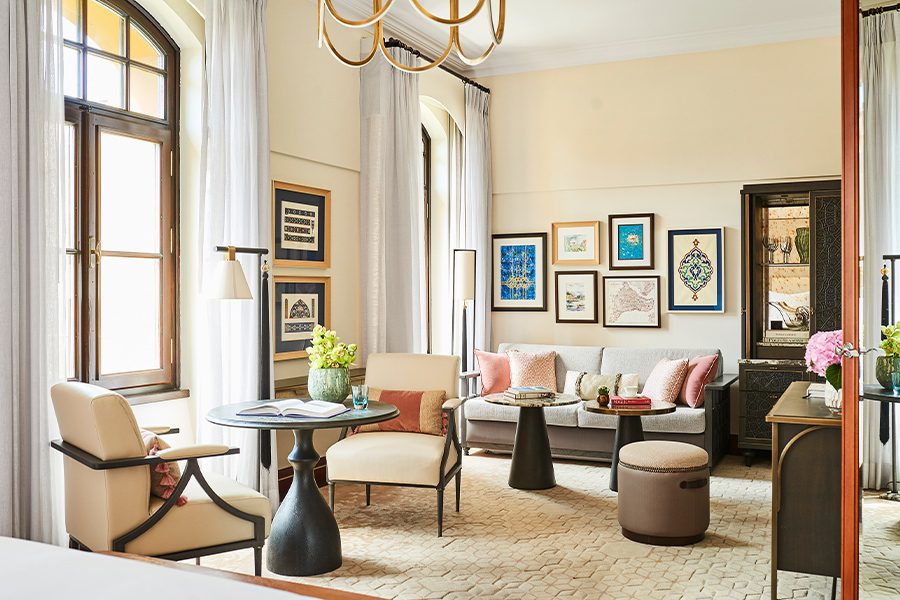
The Four Seasons Hotel Istanbul at Sultanahmet
Why did you launch Epicurean in 2019?
We are lovers of dining experiences and as part of our evolution it was instinctive to have restaurant and bar specialists in house who understand operation and are experts in trends within the F&B sector. Epicurean is sub-branded as a separate division—we believe in a different attitude to F&B design and wanted to liberate ourselves to think differently on those schemes.
What are you currently working on?
A former castle set in the Mallorcan countryside, the elegant and timeless building now home to Castillo Hotel Son Vida, a Luxury Collection Hotel, Mallorca has enduring appeal, and we introduced a contemporary yet refined and layered interior design scheme, revealing notes of romance and glamour intrinsic to the hotel’s past while overlaying a more modern, island-chic aesthetic to the design thinking.
Four Seasons Hotel Istanbul at Sultanahmet inhabits a well-known local landmark that was previously a prison and features a landscaped courtyard surrounded by stone walls, a working masjid, and guard towers. We created design solutions that reflected the beauty and history of the site and Old Istanbul, while keeping in step with a contemporary, residential design language that is synonymous with the Four Seasons brand.
Villa Copenhagen is situated in the Danish capital’s historic Central Post & Telegraph Head Office, which was originally built in 1912. We were called upon to transform the public areas of the iconic building, with the aim to accentuate the historic aspects and its architecture while also introducing contemporary Nordic designs.
What is your favorite part about hospitality design?
Travel has been a lifelong passion, Martin and I are both inquisitive and enchanted by different parts of the world. Hotels are the window that tend to frame a lot of our experiences of destinations. For us, it’s important to ensure that hotels enhance and elevate an experience by both meeting the needs of a weary traveler and allowing them an avenue into the heart of the place. We are lucky enough to work across several sectors of design. Hotel design gives an element of escapism and scale that is addictive.
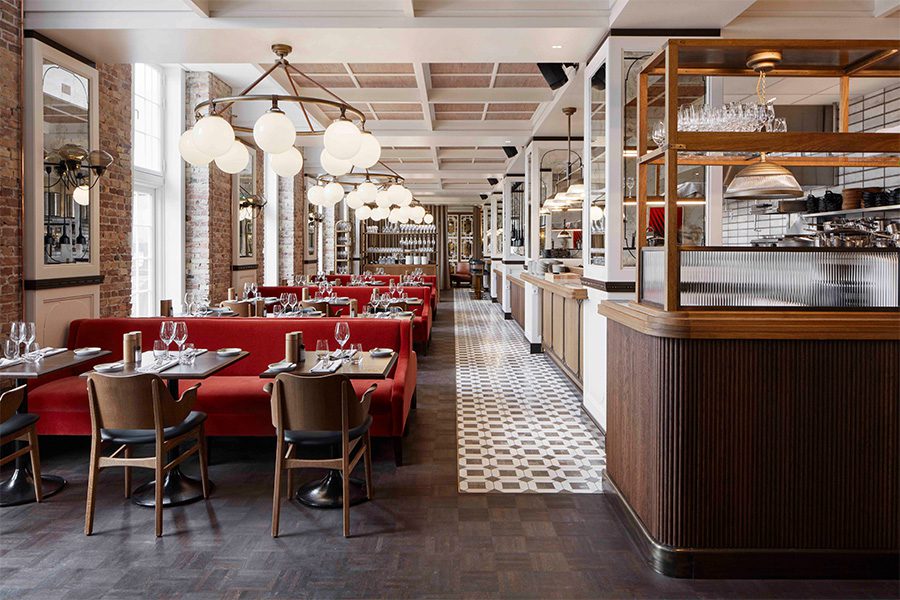
Kontrast restaurant at Villa Copenhagen
What architect or designer do you admire most?
Vivienne Westwood challenged the establishment and developed an enduring international brand, while championing authentic materials such as Scottish tweed fabrics. She injected attitude, humor, and intelligence into timeless fashion that transcends trends and is deeply admirable.
Textile designer Anni Albers progressed her designs over her career, evolving beautifully textural pieces that reflected the art movements of their time. I’m always intrigued by textiles, which can be more than functional—they can be art pieces themselves.
What’s next for Goddard Littlefair?
We’re working on such a diverse range of projects, spanning from Europe into Asia and beyond. In addition to seeing landmark projects (like the Guerlain Spa at Raffles, London at the OWO and the Mandarin Oriental Vienna), we’re also working extensively across resorts. A standout project at the moment is a resort in the Mediterranean working alongside owners that understand hospitality, including all the elements of F&B and spa. We’re truly excited to see this project come to life.
If you weren’t in your current career, what would you be doing?
I love all things horticulture, so landscape design is something that intrigues me. In my spare time, I try to dabble at home within the realms of our small, walled gardens. The connection with nature still gives me a huge sense of wellbeing and happiness.
More from HD:
Noūs Santorini Reinterprets the Island’s Whitewashed Aesthetic
4 Design-Forward Cannabis Stores and Dispensaries
Remedy Place Brings Its Social Wellness Club to New York

